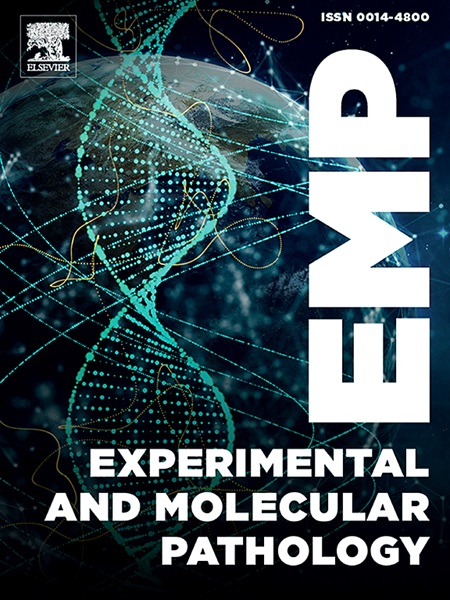Morphological characteristics, extracellular vesicle structure and stem-like specificity of human follicular fluid cell subpopulation during osteodifferentiation
IF 3.7
4区 医学
Q2 PATHOLOGY
引用次数: 0
Abstract
Extracellular vesicles can play an important role in the processes occurring after stem cell transplantation, preventing cell apoptosis, stimulating immunological processes, and promoting the synthesis of extracellular matrix. Human follicular fluid (FF) can be a source of a subpopulation of cells with mesenchymal stem cells (MSCs) properties. Moreover these subpopulations of FF cells can differentiate into osteoblasts. In presented studies flow cytometry of ovarian FF cells confirmed positive expression of MSCs markers such as: CD44, CD90, CD105, CD73 and negative expression of a hematopoietic marker: CD45. The CD90+, CD105+, CD45- cell subpopulation has been obtained during magnetic separation using appropriate antibodies conjugated with microbeads. The extracellular vesicles (EVs) secreted by the cells during osteodifferentiation process differed from those secreted by cells culture in the basal medium. Based on the previous and current electron microscopy research, changes in size, number, and shape would support the notion that released EVs could be crucial to the ovarian FF cell subpopulation differentiation process. Osteogenic differentiation has been confirmed via Alizarin red staining. Therefore, follicular fluid (FF) can be a new source of a cell subpopulation with MSC properties, with the cells capable of differentiating into the osteogenic lineage. EVs could play a key role as mediators in tissue regeneration, especially bone tissue regeneration.
骨分化过程中卵泡液细胞亚群的形态学特征、细胞外囊泡结构和茎样特异性
细胞外囊泡在干细胞移植后发生的过程中发挥重要作用,可防止细胞凋亡,刺激免疫过程,促进细胞外基质的合成。人卵泡液(FF)可能是具有间充质干细胞(MSCs)特性的细胞亚群的来源。此外,这些FF细胞亚群可以分化成成骨细胞。在目前的研究中,卵巢FF细胞的流式细胞术证实MSCs标记物如CD44、CD90、CD105、CD73阳性表达,而造血标记物CD45阴性表达。利用适当的抗体结合微珠进行磁分离,获得了CD90+, CD105+, CD45-细胞亚群。细胞在骨分化过程中分泌的细胞外囊泡(EVs)与在基础培养基中培养的细胞分泌的细胞外囊泡不同。根据以往和目前的电镜研究,大小、数量和形状的变化支持了释放的ev可能对卵巢FF细胞亚群分化过程至关重要的观点。茜素红染色证实成骨分化。因此,卵泡液(FF)可以成为具有间充质干细胞特性的细胞亚群的新来源,这些细胞能够分化成成骨谱系。ev可能在组织再生,特别是骨组织再生中发挥重要的介质作用。
本文章由计算机程序翻译,如有差异,请以英文原文为准。
求助全文
约1分钟内获得全文
求助全文
来源期刊
CiteScore
8.90
自引率
0.00%
发文量
78
审稿时长
11.5 weeks
期刊介绍:
Under new editorial leadership, Experimental and Molecular Pathology presents original articles on disease processes in relation to structural and biochemical alterations in mammalian tissues and fluids and on the application of newer techniques of molecular biology to problems of pathology in humans and other animals. The journal also publishes selected interpretive synthesis reviews by bench level investigators working at the "cutting edge" of contemporary research in pathology. In addition, special thematic issues present original research reports that unravel some of Nature''s most jealously guarded secrets on the pathologic basis of disease.
Research Areas include: Stem cells; Neoangiogenesis; Molecular diagnostics; Polymerase chain reaction; In situ hybridization; DNA sequencing; Cell receptors; Carcinogenesis; Pathobiology of neoplasia; Complex infectious diseases; Transplantation; Cytokines; Flow cytomeric analysis; Inflammation; Cellular injury; Immunology and hypersensitivity; Athersclerosis.

 求助内容:
求助内容: 应助结果提醒方式:
应助结果提醒方式:


